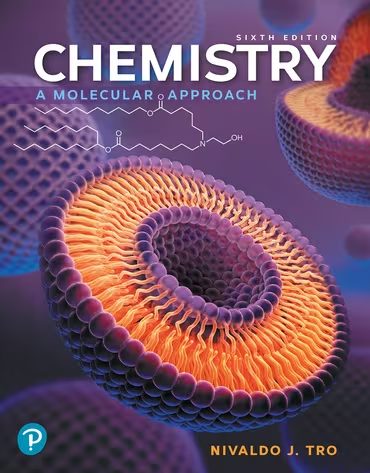Hard water often contains dissolved Ca2+ and Mg2+ ions. One way to soften water is to add phosphates. The phosphate ion forms insoluble precipitates with calcium and magnesium ions, removing them from solution. A solution is 0.050 M in calcium chloride and 0.085 M in magnesium nitrate. What mass of sodium phosphate would you add to 1.5 L of this solution to completely eliminate the hard water ions? Assume complete reaction.

A solution contains Cr3+ ions and Mg2+ ions. The addition of 1.00 L of 1.51 M NaF solution causes the complete precipitation of these ions as CrF3(s) and MgF2(s). The total mass of the precipitate is 49.6 g. Find the mass of Cr3+ in the original solution.
 Verified step by step guidance
Verified step by step guidance
Verified video answer for a similar problem:
Key Concepts
Stoichiometry

Precipitation Reactions

Molar Mass

An acid solution is 0.100 M in HCl and 0.200 M in H2SO4. What volume of a 0.150 M KOH solution would completely neutralize all the acid in 500.0 mL of this solution?
Find the mass of barium metal (in grams) that must react with O2 to produce enough barium oxide to prepare 1.0 L of a 0.10 M solution of OH-.
Treatment of gold metal with BrF3 and KF produces Br2 and KAuF4, a salt of gold. Find the mass of the gold salt that forms when a 73.5-g mixture of equal masses of all three reactants is prepared.
Treatment of gold metal with BrF3 and KF produces Br2 and KAuF4, a salt of gold. Identify the oxidizing agent and the reducing agent in this reaction.
A solution contains one or more of the following ions: Ag+ , Ca2+ , and Cu2+ . When you add sodium chloride to the solution, no precipitate forms. When you add sodium sulfate to the solution, a white precipitate forms. You filter off the precipitate and add sodium carbonate to the remaining solution, producing another precipitate. Write net ionic equations for the formation of each of the precipitates observed.
